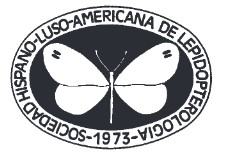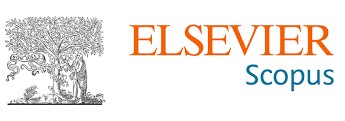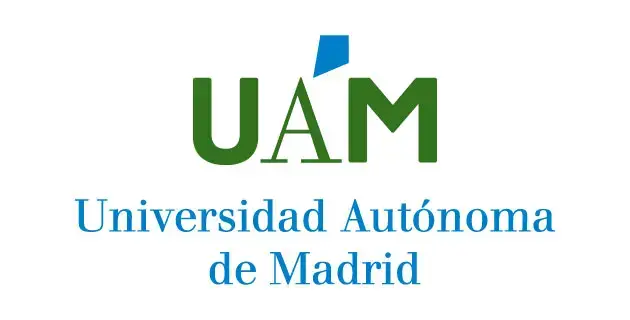Host plant selection in Plebejus argus (Linnaeus, 1758) and its mutualistic ant. The role of plant architecture (Lepidoptera: Lycaenidae)
DOI:
https://doi.org/10.57065/shilap.635Keywords:
Lepidoptera, Lycaenidae, plant architecture, habitat selection, Plebejus argus, Lasius niger, management, mutualism, egg laying, SpainAbstract
In the Doñana National Park the larvae of Plebejus argus (Linnaeus, 1758) feed on Halimium halimifolium L. Willk. and maintain a mutualistic relationship with the ant Lasius niger (Linnaeus, 1758), nesting on the base of these shrubs. The architecture of this plant has been analysed trying to assess if there are visual and structural characters selected by both the associated ants and butterflies for egg laying that enable a quick recognition of those with a greater probability of occupancy. We also analyse whether the behaviour of selection of ants matches in areas of high and low density of nests. The results show that ants choose higher and more isolated plants both in areas of high and low density of nests. The selection of the butterfly for egg laying partially matches that of the ant, although isolation of the plant has no significance for butterflies. It is possible to identify egg-carrying target plants prior to scrub clearings, trying to mitigate the collateral effects that this management measure has on these species.
Downloads
Global Statistics ℹ️
|
284
Views
|
133
Downloads
|
|
417
Total
|
|
References
AGOSTA, S. J., 2006.– On ecological fitting, plant-insect associations, herbivore host shifts, and host plant selection.– Oikos, 114(3): 556-565. DOI: https://doi.org/10.1111/j.2006.0030-1299.15025.x
ALBANO-ARAÚJO, A. A., D’ARC DE PAULA, J., ALVES-CARNEIRO, M. A. & SCHOEREDER, J. H., 2006.– Effects of host plant architecture on colonization by galling insects.– Austral Ecology, 31: 343-348. DOI: https://doi.org/10.1111/j.1442-9993.2006.01563.x
ÁLVAREZ, M., RUIZ, E., LÓPEZ-MUNGUIRA, M., MARTÍNEZ, M. D., & HERNÁNDEZ, J. M., 2005.– La emisión de sonido en hormigas y mariposas: ¿un sistema de comunicación entre especies?- Actas de la XVI Bienal de la Real Sociedad Española de Historia Natural: 39-41.
ANTHES, N., FARTMANN, T., HERMANN, G. & KAULE, G., 2003.– Combining larval habitat quality and metapopulation structure - the key for successful management of pre-alpine Euphydryas aurinia colonies.– Journal of Insect Conservation, 7: 175-185. DOI: https://doi.org/10.1023/A:1027330422958
AWMACK, C. S. & LEATHER, S. R., 2002.– Host plant quality and fecundity in herbivorous insects.– Annual Review of Entomology, 47: 817-844. DOI: https://doi.org/10.1146/annurev.ento.47.091201.145300
BARROS-BELLANDA, C. H. & ZUCOLOTO, F. S., 2005.– Egg cannibalism in Ascia monuste in the field; opportunistic, preferential and very frequent.– Journal of Ethology, 23: 133-138 (doi 10.1007/s10164-004-0138-y). DOI: https://doi.org/10.1007/s10164-004-0138-y
BECKERS, R., DENEUBOURG, J. L. & GOSS, S., 1992.– Trail laying behaviour during food recruitment in the ant Lasius niger (L.).– Insectes Sociaux, 39: 59-72. DOI: https://doi.org/10.1007/BF01240531
BERGSTRÖM, A., 2005.– Oviposition site preferences of the threatened butterfly Parnassius mnemosyne - implications for conservation.– Journal of Insect Conservation, 9: 21-27. DOI: https://doi.org/10.1007/s10841-004-3204-4
BEYER, L. J. & SCHULTZ, C. B., 2010.– Oviposition selection by a rare grass skipper Polites mardon in montane habitats: Advancing ecological understanding to develop conservation strategies.– Biological Conservation, 143(4): 862-872. DOI: https://doi.org/10.1016/j.biocon.2009.12.031
BOOMSMA, J. J. & DE VRIES, A., 1980.– Ant species distribution in a sandy coastal plain.– Ecological Entomology, 5: 189-204. DOI: https://doi.org/10.1111/j.1365-2311.1980.tb01142.x
BOOMSMA, J. J. & VAN LOON, A. J., 1982.– Structure and diversity of ant communities in successive coastal dune valleys.– Journal of Animal Ecology, 51: 957-974. DOI: https://doi.org/10.2307/4016
BOOMSMA, J. J. VAN DER LEE, G. A. & VAN DER HAVE, T. M., 1982.– On the production ecology of Lasius niger (Hymenoptera: Formicidae) in successive coastal dune valleys.– Journal of Animal Ecology, 51: 975-991. DOI: https://doi.org/10.2307/4017
BRISTOW, C. M., 1991.– Why are so few aphids ant-tended? - In C. R. HUXLEY & D. F. CUTLER (eds). Ant-Plant Interactions: 104-119. Oxford University Press, Oxford. DOI: https://doi.org/10.1093/oso/9780198546399.003.0009
BROWER, D. M. & STAMP, N. S., 1987.– Patterns of oviposition in Hemileuca lucina (Saturniidae).– Journal of the Lepidopterists’ Society, 41: 131-140.
CAMARGO, R. S., FORTI, L. C., DE MATOS, C. A. O. LOPES, J. F. & DE ANDRADE, A. P. P., 2003.– Physical resistance as a criterion in the selection of foraging material by Acromyrmex subterraneus brunneus Forel, 1911(Hym. Formicidae).– Journal of Applied Entomology, 128(5): 329-331. DOI: https://doi.org/10.1111/j.1439-0418.2004.00844.x
CERDÁ, X. & RETANA, J., 2000.– Alternative strategies by thermophilic ants to cope with extreme heat: individual versus colony level traits.– Oikos, 89: 155-163. DOI: https://doi.org/10.1034/j.1600-0706.2000.890117.x
CLARK, L. G. & DENNEHY, T. J., 1988.– Oviposition behaviour of grape berry moth.– Entomologica Experimentalis et Applicata, 47: 223-230. DOI: https://doi.org/10.1111/j.1570-7458.1988.tb01140.x
COURTNEY, S. P. & COURTNEY, S., 1982.– The edge effect in butterfly oviposition: causality in Anthocharis cardamines and related species.– Ecological Entomology, 7: 131-137. DOI: https://doi.org/10.1111/j.1365-2311.1982.tb00651.x
COURTNEY, S. P., 1984.– The Evolution of egg clustering by butterflies and other insects.– American Naturalist, 123(2): 276-281. DOI: https://doi.org/10.1086/284202
DENNIS, R. R., 1983.– Pattern and response in egglaying of the orange tip butterfly Anthocharis cardamines (L.) (Pieridae).– Vasculum, 98: 27-43.
DENNIS, R. R., 1985.– The edge effect in butterfly oviposition, host plant condition, edge effect breakdown and opportunism.– Entomologist’s Gazette, 36: 285-291.
DEPICKÉRE, S., FRESNEAU, D., & DENEUBOURG, J. L., 2008.– Effect of social and environmental factors on ant aggregation: A general response? - Journal of Insect Physiology, 54: 1349-1355. DOI: https://doi.org/10.1016/j.jinsphys.2008.07.013
DOAK, P., KAREIVA, P. & KINGSOLVER, J., 2006.– Fitness consequences of choosy oviposition for a timelimited butterfly.– Ecology, 87: 395-408. DOI: https://doi.org/10.1890/05-0647
DOBLAS-MIRANDA, E. & REYES-LÓPEZ, J., 2008.– Foraging strategy quick response to temperature of Messor barbarus (Hymenoptera: Formicidae) in Mediterranean environments.– Environmental Entomology, 37(4): 857-61. DOI: https://doi.org/10.1093/ee/37.4.857
EICHEL, S. & FARTMANN, T., 2008.– Management of calcareous grasslands for Nickerl’s fritillary (Melitaea aurelia) has to consider habitat requirements of the immature stages, isolation and patch area.– Journal of Insect Conservation, 12: 677-688. DOI: https://doi.org/10.1007/s10841-007-9110-9
FARTMANN, T. & TIMMERMANN, K., 2006.– Where to find the eggs and how to manage the breeding sites of the Brown Hairstreak (Thecla betulae (Linnaeus, 1758) in Central Europe? - Nota lepidopterologica, 29(1/2): 117-126.
FERNÁNDEZ-HAEGER, J., GARCÍA-GARCÍA, I. & AMAT, J. A., 1976.– Guía de las Mariposas de Doñana.– Naturalia Hispanica, 6: 1-55.
FOURCASSIÉ, V., SCHMITT, T., & DETRAIN, C., 2012.– Impact of interference competition on exploration and food exploitation in the ant Lasius niger.– Psyche, 2012: doi:10.1155/2012/383757. DOI: https://doi.org/10.1155/2012/383757
GARCÍA-NOVO, F., MERINO, J., RAMÍREZ-DIAZ, L., RODENAS, M., SANCHO, F., TORRES, A., GONZÁLEZ-BERNÁLDEZ, F., DÍAZ-PINEDA, F., ALLIER, C., BRESSET, V. & LACOSTE, A., 1977.– Doñana. Prospección e inventario de ecosistemas.– Monografías ICONA, 18: 244 pp. Ministerio de Agricultura, Madrid.
GONÇALVES-ALVIM, S. J. & FERNANDES, G. W., 2001.– Biodiversity of galling insects: historical, community and habitat effects in four Neotropical savannas.– Biodiversity Conservation, 10: 70-98. DOI: https://doi.org/10.1023/A:1016602213305
GUTIÉRREZ, D., FERNÁNDEZ, P., SEYMOUR, A. & JORDANO, D., 2005.– Habitat distribution models: are mutualist distributions good predictors of their associates? - Ecological Applications, 15(1): 3-18. DOI: https://doi.org/10.1890/03-5344
HOLEC, M., FROUZ, J. & POKOMY, R., 2006.– The influence of different vegetation patches on the spatial distribution of nests and the epigeic activity of ants (Lasius niger) on a spoil dump after brown coal mining (Czech Republic).– European Journal of Soil Biology, 42(3): 158-165. DOI: https://doi.org/10.1016/j.ejsobi.2005.12.005
JANSEN, S. H. D. R., HOLMGREN, M., VAN LANGEVELDE, F. & WYNHOFF, I., 2012.– Resource use of specialist butterflies in agricultural landscapes: conservation lessons from the butterfly Phengaris (Maculinea) nausithous.– Journal of Insect Conservation, 16: 921-930 (doi 10.1007/s10841-012-9479-y). DOI: https://doi.org/10.1007/s10841-012-9479-y
JOHST, K., DRECHSLER, M., THOMAS, J. & SETTELE, J., 2006.– Influence of mowing on the persistence of two endangered large blue butterfly species.– Journal of Applied Ecology, 43: 333-342. DOI: https://doi.org/10.1111/j.1365-2664.2006.01125.x
JORDANO, D., RODRÍGUEZ, J., THOMAS, C. D. & FERNÁNDEZ-HAEGER, J., 1992.– The distribution and density of a lycaenid butterfly in relation to Lasius ants.– Oecologia, 91: 439-446. DOI: https://doi.org/10.1007/BF00317635
LIU, W., WANG, Y. & XU, R., 2006.– Habitat utilization by ovipositing females and larvae of the Marsh fritillary (Euphydryas aurinia) in a mosaic of meadows and croplands.– Journal of Insect Conservation, 10: 351-360 (doi 10.1007/s10841-006-9009-x). DOI: https://doi.org/10.1007/s10841-006-9009-x
LÖRTSCHER, M., ERHARDT, A. & ZETTEL, J., 1995.– Microdistribution of butterflies in a mosaic-like habitat: the role of nectar sources.– Ecography, 18: 15-26. DOI: https://doi.org/10.1111/j.1600-0587.1995.tb00115.x
MAILLEUX, A. C., DENEUBOURG, J. L. & DETRAIN, C., 2003.– How does colony growth influence communication in ants? - Insectes Sociaux, 50: 24-31. DOI: https://doi.org/10.1007/s000400300004
MARTIN-STRAUSZ, M., FIEDLER, K., FRANZE´N, M. & WIEMERS, M., 2012.– Habitat and host plant use of the Large Copper Butterfly Lycaena dispar in an urban environment.– Journal of Insect Conservation, 16: 709-721. DOI: https://doi.org/10.1007/s10841-012-9456-5
MORENO, S. & VILLAFUERTE, R., 1995.– Traditional management of scrubland for the conservation of rabbits Oryctolagus cuniculus and their predators in Doñana National Park. Spain.– Biological Conservation, 73: 81-85. DOI: https://doi.org/10.1016/0006-3207(95)90069-1
OBREGÓN, R., DE HARO, S., JORDANO, D. & FERNÁNDEZ-HAEGER, J., 2012.– Lampides boeticus (Lepidoptera: Lycaenidae) preys on cocoons of its own specific parasitoid Cotesia specularis (Hymenoptera: Braconidae).– Journal of Insect Behavior, 25: 514-517 (doi 10.1007/s10905-012-9318-8). DOI: https://doi.org/10.1007/s10905-012-9318-8
PATRICELLI, D., BARBERO, F., LA MORGIA, V., CASACCI, L. P., WITEK, M., BALLETTO, E. & BONELLI, S., 2011.– To lay or not to lay: oviposition of Maculinea arion in relation to Myrmica ant presence and host plant phenology.– Animal Behaviour, 82: 791-799. DOI: https://doi.org/10.1016/j.anbehav.2011.07.011
PIERCE, N. E. & EASTEL, S., 1986.– The selective advantage of attendant ants for the larvae of a lycaenid butterfly, Glaucopsyche lygdamus.– Journal of Animal Ecology, 55: 451-462. DOI: https://doi.org/10.2307/4730
PIERCE, N. E. & ELGAR, M. A., 1985.– The influence of ants on host plant selection by Jalmenus evagoras, a myrmecophilous lycaenid butterfly.– Behavioral Ecology and Sociobiology, 16: 209-222. DOI: https://doi.org/10.1007/BF00310983
PIERCE, N. E., BRABY, M. F., HEATH, A., LOHMAN, D. J., MATHEW, J. RAND, D. B. & TRAVASSOS, M. A., 2002.– The ecology and evolution of ant association in the Lycaenidae (Lepidoptera).– Annual Review of Entomology, 47: 733-71. DOI: https://doi.org/10.1146/annurev.ento.47.091201.145257
PRADEL, K. & FISCHER, K., 2011.– Living on the edge: Habitat and host-plant selection in the butterfly Lycaena tityrus (Lepidoptera: Lycaenidae) close to its northern range limit.– Journal of Research on the Lepidoptera, 44: 35-41. DOI: https://doi.org/10.5962/p.266493
RABASA, S. G., GUTIÉRREZ, D. & ESCUDERO, A., 2004.– Egg laying by a butterfly on a fragmented host plant: a multi-level approach.– Ecography, 28: 629-639. DOI: https://doi.org/10.1111/j.2005.0906-7590.04229.x
REID, A. M. & HOCHULI, D. F., 2007.– Grassland invertebrate assemblages in managed landscapes: Effect of host plant and microhabitat architecture.– Austral Ecology, 32: 708-718. DOI: https://doi.org/10.1111/j.1442-9993.2007.01767.x
REUDLER-TALSMA, J. H., BIERE, A., HARVEY, J. A. & VAN NOUHUYS, S., 2008.– Oviposition cues for a specialist butterfly-plant chemistry and size.– Journal of Chemical Ecology, 34: 1202-1212. DOI: https://doi.org/10.1007/s10886-008-9519-y
RIIHIMÄKI, J., VEHVILÄINEN, H., KAITANIEMI, P. & KORICHEVA, J., 2006.– Host tree architecture mediates the effect of predators on herbivore survival.– Ecological Entomology, 31(3): 227-235. DOI: https://doi.org/10.1111/j.1365-2311.2006.00784.x
RODRÍGUEZ, J., FERNÁNDEZ-HAEGER, J. & JORDANO, D., 1991.– El ciclo biológico de Plebejus argus (Linnaeus, 1758) en el Parque Nacional de Doñana (SW de España).– SHILAP Revista de lepidopterología, 19(76): 241-252.
RUDGERS, J. & WHITNEY, K. D., 2006.– Interactions between insect herbivores and a plant architectural dimorphism.– Journal of Ecology, 94: 1249-1260. DOI: https://doi.org/10.1111/j.1365-2745.2006.01161.x
SAKATA, H. & HASHIMOTO, Y., 2000.– Should aphids attract or repel ants? Effect of rival aphids and extrafloral nectaries on ant-aphid interactions.– Population Ecology, 42: 171-178. DOI: https://doi.org/10.1007/PL00011996
SCHOONHOVEN, L. M., BEERLING, E. A. M., BRAAKSMAN, R. & VAN VUGT, Y., 1990.– Does the imported cabbageworm Pieris rapae use an oviposition deterring pheromone? - Journal of Chemical Ecology, 16(5): 1649-1655. DOI: https://doi.org/10.1007/BF01014097
SHANSHAN, Z., YILI, J., JIANJUN, T. & XIN, C., 2009.– The invasive plant Solidago canadensis L. suppresses local soil pathogens through allelopathy.– Applied Soil Ecology, 41: 215-222. DOI: https://doi.org/10.1016/j.apsoil.2008.11.002
SOKAL, R. R. & ROHLF, F. J., 1984.– Introducción a la bioestadística: 362 pp. Editorial Reverté, Barcelona.
SUWARNO, CHE SALMAH, M. R., ALI, A. & HASSAN, A. A., 2010.– Oviposition preference of swallowtail butterfly, Papilio polytes (Lepidoptera: Papilionidae) on four Rutaceae (Sapindales) host plant species.– Insect Science, 17: 369-378. DOI: https://doi.org/10.1111/j.1744-7917.2010.01330.x
THOMAS, J. A. SIMCOX, D. J., CLARKE, R. T., 2009.– Successful conservation of a threatened Maculinea butterfly.– Science, 325: 80-83. DOI: https://doi.org/10.1126/science.1175726
THOMPSON, J. N. & PELLMYR, O., 1991.– Evolution of oviposition behavior and host preference in Lepidoptera.– Annual Review of Entomology, 36: 65-89. DOI: https://doi.org/10.1146/annurev.en.36.010191.000433
WAGNER, D. & KURINA, L., 1997.– The influence of ants and water availability on oviposition behaviour and survivorship of a facultatively ant-tended herbivore.– Ecological Entomology, 22: 352-360. DOI: https://doi.org/10.1046/j.1365-2311.1997.00077.x
WYNHOFF, I., GRUTTERS, M. & VAN LANGEVELDE, F., 2008.– Looking for the ants: selection of oviposition sites by two myrmecophilous butterfly species.– Animal Biology, 58: 371-388. DOI: https://doi.org/10.1163/157075608X383683
Published
How to Cite
Issue
Section
License
Copyright (c) 2016 P. Fernández, D. Gutiérrez, J. Fernández-Haeger, D. Jordano

This work is licensed under a Creative Commons Attribution 4.0 International License.
The author SS retains his trademark and patent rights to any process or procedure within the article.
The author retains the right to share, distribute, perform and publicly communicate the article published in SHILAP Revista de lepidopterología, with initial acknowledgement of its publication in SHILAP Revista de lepidopterología.
The author retains the right to make a subsequent publication of his work, from using the article to publishing it in a book, provided that he indicates its initial publication in SHILAP Revista de lepidopterología.
Each submission to SHILAP Revista de lepidopterología must be accompanied by an acceptance of copyright and acknowledgement of authorship. By accepting them, authors retain copyright of their work and agree that the article, if accepted for publication by SHILAP Revista de lepidopterología, will be licensed for use and distribution under a "Creative Commons Attribution 4.0 International" (CC BY 4.0) licence that allows third parties to share and adapt the content for any purpose giving appropriate credit to the original work.
You may read here the basic information and the legal text of the license. The indication of the CC BY 4.0 License must be expressly stated in this way when necessary.
As of 2022, the content of the print and digital version is licensed under a "Creative Commons Attribution 4.0 International License" (CC BY 4.0), licence that allows third parties to share and adapt the content for any purpose giving appropriate credit to the original work.
Previous content in the journal was published under a traditional copyright licence; however, the archive is available for free access.
When using the contents of SHILAP Revista de lepidopterología published before 2022, including figures, tables or any other material in printed or electronic format belong to the authors of the articles, the authors must obtain the permission of the copyright holder. Legal, financial and criminal liabilities in this respect belong to the author(s).
In application of the Principle of Priority of the International Code of Zoological Nomenclature, no other version than the one published by the publisher may be deposited in repositories, personal websites or similar.





























